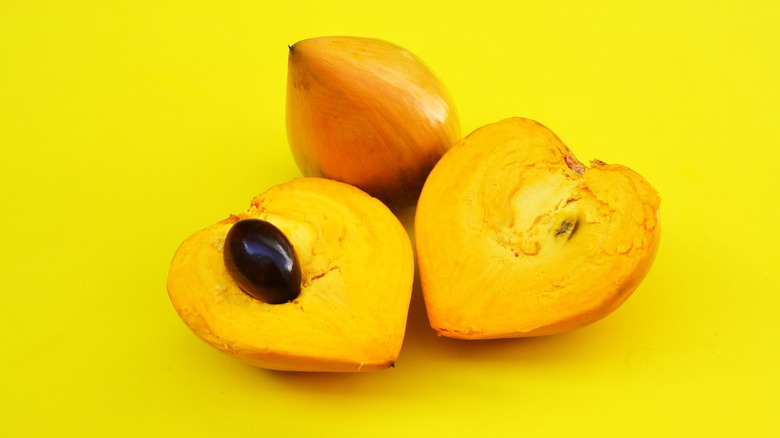You Can Use This Fruit To Make Eggnog
Eggnog has been around for a long time. The drink's origins date back to 13th century Britain, but as Time notes, its holiday associations likely didn't begin until it came to America in the 18th century. The colonists were fond of boozing up the traditional recipe of eggs, milk, and spices with a tot of rum. Founding father and first president, George Washington, even had his own personal recipe — one that included not just rum but also brandy, whiskey, and sherry.
But it wasn't the alcohol that accounted for eggnog's enduring links with Christmas and the holiday season. Rather, according to Insider, it was the drink's inclusion of spices like nutmeg and cinnamon, which were considered emblematic of seasonal wintertime cheer. Of course, just because eggnog has a long history with Christmas doesn't mean lovers of the nog need to wait until December to enjoy its creamy goodness. Nor, for that matter, are eggnog aficionados compelled to use its namesake ingredient: egg. As it turns out, there's a fruit substitute that both looks and tastes strikingly similar.
Eggfruit and its egg-like uses
The origins of the canistel fruit are embedded in its scientific nomenclature — Pouteria campechiana –- the second word of which refers to its ancestral home in the Mexican state of Campeche, explains Atlas Obscura. The trees that bear the tasty yellow fruit grow wild only in Mexico and the Central American countries of Belize, Guatemala, and El Salvador (per Julia F. Morton's "Fruits of Warm Climates") but have since been introduced elsewhere, including in the U.S. states of Florida and Hawaii.
Canistel is notable for its rich variety of alternative names. This means the fruit has more aliases than a career criminal. As Morton observes, it's called zapote amarillo in Colombia, zapotillo in Costa Rica, zapotillo de montana in Guatemala, and mamey cerera in Belize, among many other "noms de fruit." Canistel's best-known handle, however, is derived from its color. The fruit's skin is yellow, but its flesh is a bright orangish yellow, a hue which has drawn comparisons to egg yolks, per Britannica. Hence, in addition to its many other names, canistel is also commonly known as eggfruit.
Canistel doesn't just have an egg-like appearance, however. It also lends itself to some very egg-like uses as an ingredient in custards and eggnog. It's a creative substitute in the latter and thrives as the centerpiece of eggnogs blended with milk, nutmeg, vanilla, and a bit of sugar (via Atlas Obscura).

